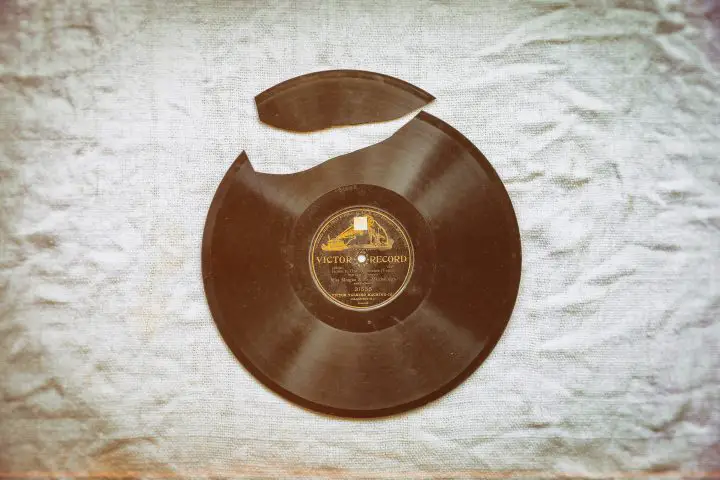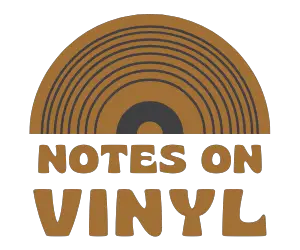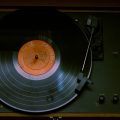Do you have a whole bunch of pesky 45 rpm 7 inch records just lying around and gathering dust in your attic or garage that you simply do not know what to do with? Or, do you have a sneaking suspicion that some of your 7 inch records might be worth a little bit more than most other records of its kind?
Well, you are in the right place, for today we will be exploring and elucidating for you some of the ways you can tell are 45 records worth anything, so that you might no longer have to clutter up your house with them!
Table of Contents
Factors to Consider
In order to judge whether any kinds of vinyl record are worth anything, there are a number of key factors that we ought to consider, factors that are likely to considerably affect the price vinyl record albums might fetch when put up for sale. They are arranged hence in no particular, though it is likely that more valuable vinyl records will have more affirmative answers pertaining to each of these categories. So, get rifling through your record collection to find some of the most valuable vinyl records you own.
Age
As a general rule of thumb, more valuable records are likely to be older, perhaps even having been manufactured by a record company that no longer exists, making this an altogether more highly sought-after commodity.
Checking the age before you sell vinyl records is vital, for there are no end to the amount of stories where someone has, say, found a seemingly rare and desirable record of a late and great artist like, say, Elvis Presley, only to find that the record they thought was an original pressing was actually just a reissue.
A reissue is of course valuable in its own ways, especially in the way that it can allow later generations of listeners to enjoy music from a bygone era as though they were hearing it for the first time when it was initially released.
Reissues also allow for older generations to listen to a piece of music or a release of music that remasters and updates the sound so that it can be heard more like it was intended to be heard, so that a record professionally reproduced can rereleased to the masses.
That being said, reissued records are not old records (or at least they are not usually). In fact, it seems that the reissue is far more a trend of a newer generation of music listeners, those attempting to look back at themselves and the legacy of their popular culture with a sideways glance.
In particular, this seems a relic of the cult of nostalgia, where a vinyl record’s value lies more in its ability to soak up cultural weight for the sake of aesthetics, where droves of youths will purchase record players of inadequate quality to play records that look better on a wall then they sound when being spun.
Artist
Needless to say, some artists are more important than others. As already alluded to, enormous and influential artists’ records in the west like Elvis Presley are going to fetch a considerable amount more than a record by, say, Showaddywaddy, whose name most will be familiar with if ever they have rummaged through a bargain bin in any UK record or charity store.
Certain eras and styles of music also seem to do better than others when put up for sale. A record by an English punk rock band from the original wave of artists in this style in the mid to late 70s is going to cost more than, say, a new wave artist from five or ten years later. A certain amount of cultural weight and credibility is laid at the foot of genres like punk rock, especially for those who were there.
And most especially if the record is an original pressing – i.e. one that was pressed and released in the first batch of the record’s release. First pressings of a record by an English punk rock band like the Sex Pistols or the Buzzcocks would be worth a fortune at this point, so it is certainly worth checking when your version of the record was released, as well as learning about vinyl record types.

Most examples of a mainstream high street record store will tend favor these kinds of more popular or culturally significant artists, giving them pride of place in the window features, as well as ensuring that they are placed prominently in the racks of records.
In fact, go to any record store and you will see, amongst the racks of records, various name labels detailing where these significant artists are to be found amongst all of the other so called rabble in the record store.
Rarity
What ought also to be obvious is the fact that if a record is rarer, it is likely to be more valuable than if it were a mainstream release that saw thousands of pressings.
Let us take the example of Bauhaus’ Bela Lugosi’s Dead. This is no doubt an influential and important track in the history of popular music, acting as the first major sonic stepping stone in the progression of gothic rock and independent rock music in general.
And yet, in comparison to an album as popular and as widespread as Thriller, it would hardly have sold anything, and would certainly have been released in far smaller quantities. In this way, an original pressing of the former would likely be worth more than an original pressing of the latter, granted one had taken into account some of the other factors at play.
This can only go so far, however, and ought to be considered alongside the notoriety and popularity of the artist in general.
In another example, let us imagine that my own band Gladboy had released a very limited run of one of our records at a certain point. Objectively, there would be no way to deny the rarity of such a release, for we are scarcely known outside of a few local circles and music scenes.
Even still, despite the rarity of this release, it would never be worth as much as the release of an artist more famous and with more cultural standing than us, regardless of the rarity. Thus, the rarity of a record is not everything and ought to be weighed up alongside some or all of the other factors here listed.
And I suppose now is a useful point to mention that it would be worth doing so with every aspect here too.
Sealed
Whether or not a record is sealed can come to matter a great deal when trying to sell it on again. Think about it from your own perspective for a moment: if you were looking to purchase a record that was supposedly rare nad such, would you purchase one that was sealed still or would you instead buy one that was not?
The fact of a record’s being sealed in cellophane plastic wrapping essentially implies that it has not yet been spun or touched, which in turn implies that the record is in mint condition. It should not be hard to see how this would come to affect the price, with a record exhibiting fewer signs of wear coming to fetch a considerable amount more when sold on.
There is, however, an inverse assumption that ought to be made or at least considered, that a record might actually have been resealed after the fact in an act of counterfeiting the facts. This has become an increasing trend, especially through online marketplaces such as eBay. With no real way to prove the validity of an online seller’s details beliefs, it becomes difficult to know who to trust.
Thankfully, there are ratings that are pinned to a seller via reviews of products they have sold. Users will rate their services and the products they have sold, meaning that a future customer can know whether to be wary or whether to invest their money and trust in the seller.
This is a particularly useful facet of the form when viewing only the album covers proves not to be enough to judge whether the album is properly sealed or whether it has been resealed so as to give the impression that it is brand new or in an otherwise new and good condition.
Signature
Of course, if (alongside all of this) the record in question is signed by the artist themselves, then you will likely have a hell of a load of money coming your way, should you choose to sell it.
If you were indeed lucky enough to get an artist to sign a record of yours, then it stands to reason that the record in question will be worth a whole bunch more for having been imprinted with the mark of the artist.
This harkens back to the topic of rarity. An artist simply cannot sign every single copy of an album, and there tends to be far less signed copies of an album than unsigned copies of an album. It is thus that such albums become a bit of a commodity, rendered rarer for having been touched by the artist who made the sounds encapsulated within in the first place.
There are typically two ways to obtain a signed record. The first typically occurs when a record is purchased, say, from the merch stand at a gig where the artist (usually when prompted) signs the record as it is being bought. The other, and more of a growing trend, occurs when special editions of a record are put up for sale upon an album’s release which are sold at a slightly higher price for having been signed by the artist in question.
Regardless, there is also and will forever be the problem of counterfeiting, especially within record collecting communities.
Even without the various advances in technology, forging signatures has been an art form entertained by many for many years. Therefore, a document ensuring authenticity and/or a picture of the artist signing the record in question will likely be necessary in order to fully sell a record that is purportedly signed by the artist.
Labels
And there are two kinds of labels that are worthy of your consideration when attempting to assess whether your 45 records are worth anything: the record label that a record is released upon, and the literal sticky labels that are attached to the record/sleeve.
Some record labels – such as Columbia Records or Capital Records – hold more sway when it comes to selling old records, and if a collection of records that you are selling are by the same record company, that is all the better.
If the record label/manufacturer is one like those above – i.e. one with a considerable amount of clout in the business – then they are far more likely to deliver a quality product than a lesser known and less reputable independent record label, and it is thus that the conglomerates still manage to hold a significant monopoly, even during the second vinyl boom.
Likewise, the literal labels that are stuck upon the sleeve of a record will have a say in the amount that a record might be sold for.
There are some record stickers, for example, that have come to govern attention and wallets into the green, through being deemed rarer and thus more desirable and covetable than others.
Inversely, there are also issues of albums bearing stickers that are deemed less desirable, perhaps because they blot the otherwise sanctimonious appearance of the record’s artwork.
At certain times in a release’s lifespan, typically when the first batch is not selling so well, a record company will make use of stickers to govern a customer’s attention and get them to spend their hard-earned bucks on the record in question.

Format
Up until the late 50s, records would only have been recorded, produced, mixed, mastered, pressed, and released onto mono formats, meaning that the sounds coming out of each of the individual speakers would have been the exact same.
However, between 1957 and 1968, records would be released in both mono and stereo formats. The Beach Boys’ Pet Sounds is a prime example, still being released in both mono and stereo formats to this day. We even have both in our house from separate marriages of minds.
Some people still have their preferences with regards to these things. While the stereo version of Pet Sounds does allow the listener to hear all the parts in more individual detail, it is my own belief that something of the magic is lost in this detail, in the same way that a stereo version of one of Phil Spector’s legendary ‘wall of sound’ girl group recordings would lose the mortar that glues the entire ‘wall’ together.
Later, in the 70s, there was even such a thing as quadrophonic formats, offering the chance to listen to a release in 4 channels. This was, of course, a rare and more audiophilic choice, and so, since there are less copies of these kinds of records, they are inherently worth more money. There are, however, very few if any examples of quadrophonic 45 singles.
Condition
Besides all of these other points for consideration, some would argue that the condition of the record in question is one of the most important aspects for consideration.
If, for example, all of the other aspects were aligned – the record was old and by an artist of considerable cultural merit, rare for having been signed in a limited pressing, unmarred by stickers, and released on a reputable record label in a rarer quadrophonic format – this would not be enough to change the record being in a poor working condition.
Sadly, this is something that is more or less insurmountable. Sure enough, you can clean a record and show it some love with a spin clean record washer or something, but there is no way to turn back the clock and rewind the neglect that might have been done to the record’s face.
It might fetch something, especially if it is old and/or by an artist of considerable cultural merit and/or rare for having been signed in a limited pressing and/or unmarred by stickers and/or released on a reputable record label in a rarer quadrophonic format, though its value will be significantly dimmed if in a bad and unserviceable condition.

Final Tones
So, there you have it! Hopefully, you are now feeling safer in the knowledge of your own record collection, having found out for sure whether your own records are worth anything.
Resources like Discogs are good for telling you how much certain versions of an album are fetching online these days, though will not be able to tell you quite how much your own 45 rpm records are worth. You will have to do some of the digging yourself, for the price of a record is highly subjective and is in the eye of the beholder.
FAQs Are 45 Records Worth Anything?
What 45 records are worth money?
This will largely depend on a number of factors for your consideration: the age of the record; the artist whose music is captured on the record; the rarity of the record; whether or not the record is sealed; whether or not the record is signed by the artist; whether or not the record sleeved is covered in labels and which kind; which record label it is released on; which record format it is released on; and, finally, the condition of the record overall.
Does anyone buy 45 rpm records?
Indeed they do. Though not as popular as the 12 inch 33 1 / 3 rpm format, there is still a considerably strong market for 45 records, especially among record collectors and DJs. Since a record that is played faster is of an inherently higher fidelity, 45 rpm singles are the go to choice for DJs playing music loud over large sound systems, so that no audio quality is lost in the playback process, something that would be exacerbated by the larger forum.
How do I sell old 45 records?
In much the same way that you would sell any records. There are the usual online marketplaces, like Discogs and eBay and Amazon, and you can also sell them in the flesh at a yard sale or a vintage sale, copping up a spot by contacting those in charge. 45 rpm records of 7 inches in size are still remarkably marketable and, depending on their inherent value, can fetch considerable sums of money despite their smaller size. With the right patter and know how, those 45 rpm 7 inch records that you have lying around and gathering dust can just as easily be gathering eyes and ears out in the big wide world.
What can you do with old 45 records?
You can sell them, of course. 45 rpm records of 7 inches in size are still remarkably marketable and, depending on their inherent value, can fetch considerable sums of money despite their smaller size. With the right patter and know how, those 45 rpm 7 inch records that you have lying around and gathering dust can just as easily be gathering eyes and ears out in the big wide world. You might also learn how to cut vinyl records, and in doing so recycle them into something totally new and separate from their original purpose and intention.
How do I know if my vinyl records are valuable?
This will largely depend on a number of factors for your consideration: the age of the record; the artist whose music is captured on the record; the rarity of the record; whether or not the record is sealed; whether or not the record is signed by the artist; whether or not the record sleeved is covered in labels and which kind; which record label it is released on; which record format it is released on; and, finally, the condition of the record overall.






I have old 45 records.i have one that’s called Chattanooga that’s my home town.
Hey there Norma, hope this finds you well.
It’s great to hear from someone such as yourself who collects old 45s. Personally, I had never heard of this particular town before, so it is great to learn about it for the first time! The US sure is big, eh? You sound awful fond of your records, especially as they seem to hold particular relevance and importance to you and your heritage. Music has a real way of bringing things together, both people and places and everything in between.
Take care now and keep in touch,
Robert.
What about selling a collection of 45s from late 50s+?
Hey Julia, thank you for stopping by and I hope I will get to answer your question here.
Selling a collection of 45s from the late 1950s and beyond can potentially be a lucrative event , especially if the collection contains rare or valuable records. However, the value of the collection depends on several factors, such as the condition of the records, the artists and songs represented, and the current market demand (all explained in my article above).
Before selling your collection, it’s a good idea to do some research on the current market value of the records. You can start by checking online marketplaces and auction sites like eBay, Discogs, or Heritage Auctions to see what similar records are currently selling for. This can give you a general idea of the value of your collection. Simply Google the name of the album + the year and evaluate how much it costs by the results Google gives you.
It’s also important to consider the condition of the records. Records that are in good condition, with no scratches, scuffs, or warping, will be worth more than records that are damaged. Make sure to clean and store your records properly to ensure they are in the best condition possible.
If you’re not sure about the value of your collection or how to go about selling it, you may want to consult with a record dealer or appraiser who can provide expert advice on the value of your records and help you sell them at the best possible price.
Let me know if that helps!
wi have 45s fro. the 50s without sleeves. Does that make them worthless?
Hey Phyl.
Good day to you! Worthless is a very strong word – even a damaged record worn through will still have some worth to someone. Thus, depending on the rarity of the records of which you speak, they will certainly be worth something even without sleeves and even if they are a little damaged. Your best bet is to take them into your local record store and see what they say.
All the best,
Robert.
I just inherited a bunch of 45s and 8 tracks and I’ll have like 4 boxes of 33s how do I go about selling them
Hey David,
Hope you’re doing well. It’s always exciting when you inherit a bunch of mystery records, though it can be a sad time too if this inheritance is due to a bereavement – in which case, you have my condolences. The best way to go about shifting these records if you don’t want to keep any of them is to use a distribution site like Discogs, individually listing them all for sale. If, though, you want to shift them all in one go, you can always put the job-lot on a site like eBay and watch it go.
Hope this has been of help to you, David.
Robert.
Hi.
I have inherited a bunch of 45s from mostly the 1970’s. Your articles have been so helpful.
I still have research to do but wondered your thoughts on value of Promotional/DJ Copies?
Also, is a 45 of any value if there is a chip on the edge that does not incur on the recording. If it is a 45 of some value,
how much does it affect price?
Than you.
Hey Marie,
Hope this finds you well. Ever so glad to hear that you have found the articles here of use – that’s what they are for, at the end of the day.
Promotional/DJ copies can be worth a bunch, though this will depend on what the track is. Some promo copies of singles are different from the official release and will therefore carry with them a certain rarity which will subsequently bump up the price.
In answer to your other question, a chip on the edge of a record will certainly reduce the price that you can sell it for, though if it is only on the edge and doesn’t, as you say, affect playback, the price won’t be too hard done by. The amount that if affects the price will be entirely dependent on the rarity of the record in the first place. A rarer record will still be sought after, for example, even if it is in some way damaged.
Hope this has been of help, Marie.
Robert.